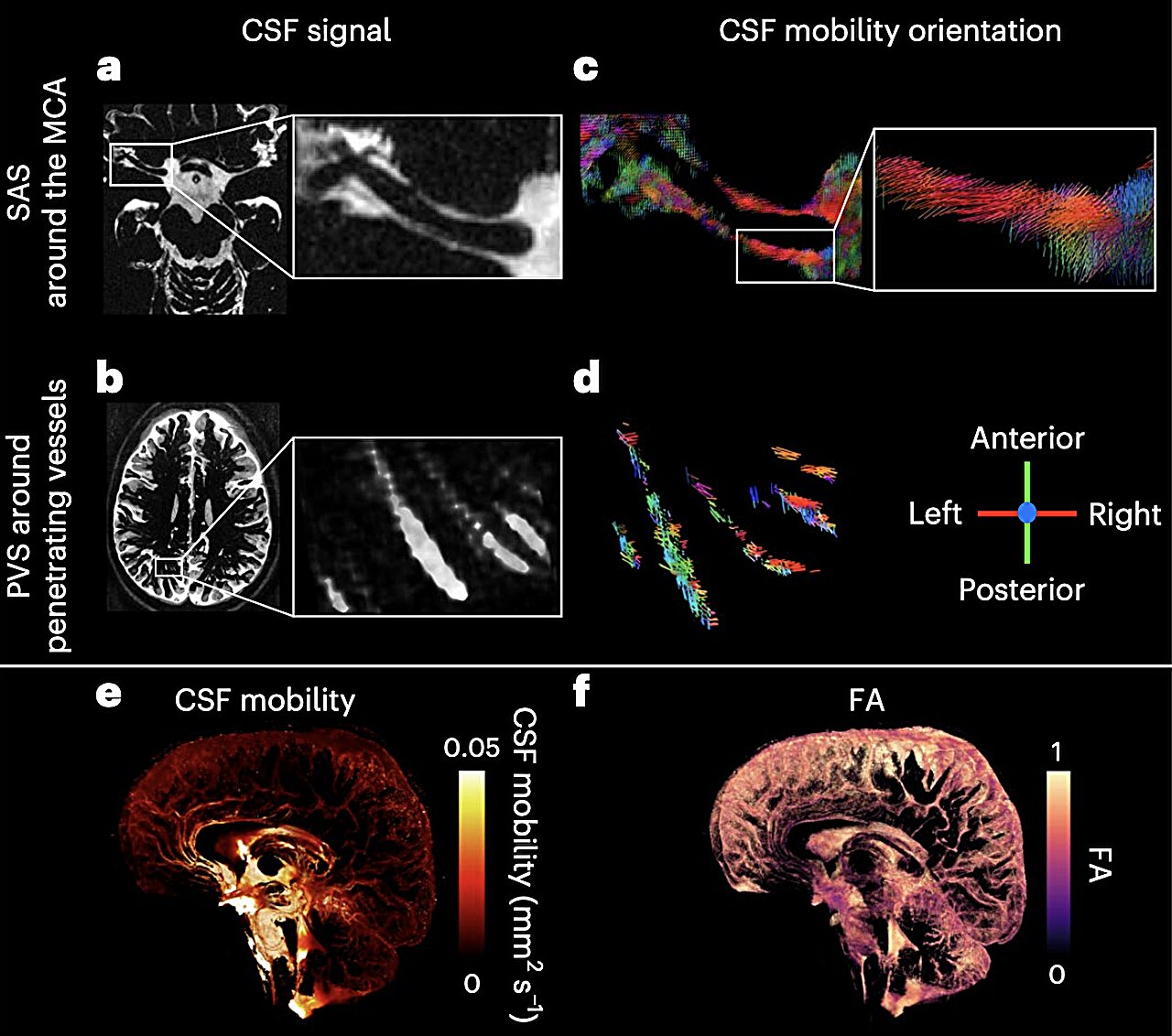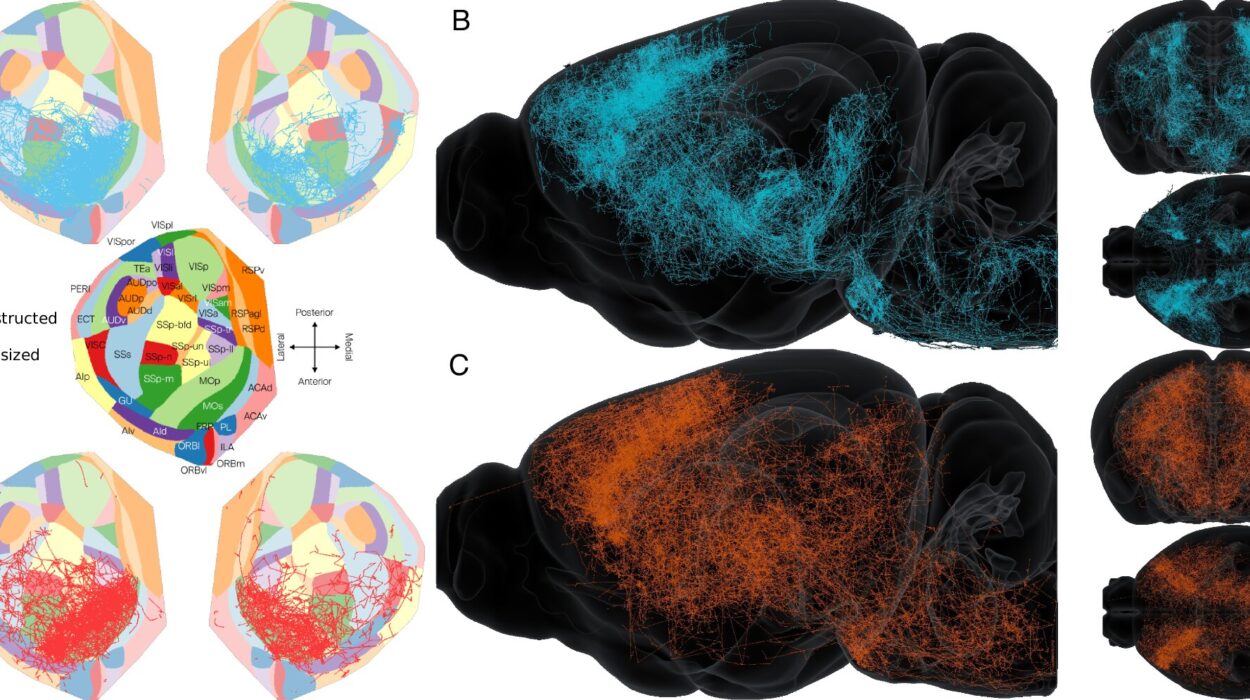When we think of cerebrospinal fluid (CSF), we often imagine it simply as the protective liquid that cushions the brain and spinal cord. Yet, as scientists at Leiden University Medical Center, the University of Amsterdam, and the German Center for Neurodegenerative Diseases (DZNE) recently uncovered, CSF does much more than just shield the nervous system—it plays a critical role in the brain’s ability to clear waste and maintain health.
The team of researchers, led by Matthias van Osch and Lydiane Hirschler, was determined to take a closer look at the fluid’s movement through the brain. They were driven by a pressing question: could the flow of CSF help us better understand neurological diseases like Alzheimer’s and cerebral amyloid angiopathy (CAA), a condition linked to the build-up of harmful proteins in the brain?
Their journey into the brain’s fluid dynamics led them to develop an innovative new technique to observe how CSF moves, offering unprecedented insights into its role in brain health. Published in Nature Neuroscience, their study marks a significant leap in the non-invasive exploration of the brain’s waste clearance system.
The Search for a Better Tool
The idea for this groundbreaking research stemmed from a challenge: previous methods of studying CSF dynamics in the brain were either invasive or lacked the resolution necessary to capture the fluid’s movement in fine detail. Traditional imaging techniques, like MRI, were too limited to isolate CSF from the blood flow that runs alongside it, a crucial distinction when studying how the fluid interacts with brain tissue.
“As most techniques investigating the brain clearance system were invasive or low-resolution, we wanted to develop a non-invasive technique that could image how CSF moves with high spatial resolution throughout the human brain,” said Matthias van Osch, senior author of the study.
Alongside him was Lydiane Hirschler, the first author, who pointed out the initial obstacle they faced. “We were pointed towards the topic of brain clearance by a visiting researcher developing simulation methods studying the driving forces of brain clearance. Then we found out that no proper non-invasive sequences were available.”
So, the team set to work, determined to fill this gap and provide a clearer picture of CSF’s movements within the brain.
A Precision Breakthrough
The method they developed uses the power of ultrahigh field MRI—specifically, a 7 Tesla MRI machine—to create highly detailed images of CSF flow. But capturing such precision required a unique approach. The researchers first had to isolate the CSF signal from the blood flow, which typically interferes with the imaging. By doing this, they ensured that their images accurately reflected the true dynamics of CSF, not blood.
“Since the brain clearance system depends on CSF channels that run alongside blood vessels, it is crucial to separate the CSF signal from the slow-moving blood signal before motion encoding,” explained van Osch and Hirschler. This clever method allowed them to capture the fluid’s movement around tiny vessels deep within the brain—regions where toxic proteins like amyloid often accumulate.
However, getting these high-resolution images required patience and time. Scans took between 30 and 40 minutes, a significant length compared to traditional imaging techniques. Yet the researchers are already exploring ways to reduce scan times using advanced reconstruction methods.
Mapping CSF Movement in Health and Disease
With their technique in hand, the researchers turned to their next goal: comparing the movement of CSF in healthy brains versus those with CAA, a disease marked by the abnormal accumulation of amyloid protein in blood vessel walls.
They found striking differences. In individuals with CAA, CSF moved in unique patterns around the brain’s blood vessels, suggesting that disrupted fluid dynamics could play a role in the disease’s development.
“We believe our technique represents a significant step forward in the non-invasive investigation of the human CSF-mediated brain clearance system,” said van Osch and Hirschler. “It opens a new window to study this system in detail and, importantly, makes it feasible to examine larger cohorts and patient populations.”
This breakthrough allows scientists to explore how changes in CSF mobility are linked to the accumulation of amyloid, a hallmark of several neurodegenerative diseases.

Unraveling the Forces Behind CSF Movement
But the study didn’t stop there. As the researchers delved deeper, they uncovered something fascinating: different forces influence CSF flow, depending on the size of the vessels and the region of the brain.
For instance, the team found that the heartbeat—specifically, the cardiac cycle—was a major driver of CSF movement in larger brain regions. However, in smaller spaces around penetrating blood vessels in the white matter, respiration and vasomotion (the rhythmic pulsation of blood vessels) also played significant roles in pushing the fluid along its pathways.
“Moreover, in cerebral amyloid angiopathy, we measured preserved CSF mobility deeper in the brain in combination with enhanced CSF mobility around the middle cerebral artery,” they observed. These insights are providing new clues as to how changes in CSF flow could contribute to diseases that affect the brain’s ability to clear waste.
What’s Next for Brain Fluid Dynamics?
The team’s research has only just begun to scratch the surface of what CSF movement can reveal about the brain. In the future, this technique could be used to study a wide range of neurological conditions, from neurodegenerative diseases like Alzheimer’s to sleep disorders. The goal is to understand how disruptions in CSF flow contribute to disease processes and to develop interventions that can correct these abnormalities.
“We are currently investigating how CSF mobility changes during sleep and in patients with neurodegenerative disorders,” the researchers said. By exploring these dynamics, they hope to unlock a better understanding of how the brain clears waste during sleep and how those processes might break down in conditions like Alzheimer’s disease.
Why This Matters
This new imaging method represents a monumental leap forward in neuroscience, offering a non-invasive, high-resolution way to study brain fluid dynamics in unprecedented detail. It opens up a whole new realm of possibilities for understanding how the brain rids itself of harmful proteins like amyloid, which are implicated in Alzheimer’s and other neurodegenerative diseases.
By providing a clearer picture of CSF movement in both healthy and diseased brains, this research offers critical insights that could eventually lead to new treatments or preventative strategies for conditions like Alzheimer’s. As the researchers continue to refine their technique and apply it to other neurological disorders, the potential for breakthroughs grows.
For now, the team is excited to see where their work will lead next. With their new approach, they’re not just studying the brain—they’re unlocking its mysteries, one pulse of fluid at a time. And in doing so, they may be opening the door to new ways of combating some of the most devastating diseases that affect us.
More information: Lydiane Hirschler et al, Region-specific drivers of CSF mobility measured with MRI in humans, Nature Neuroscience (2025). DOI: 10.1038/s41593-025-02073-3. www.nature.com/articles/s41593-025-02073-3






